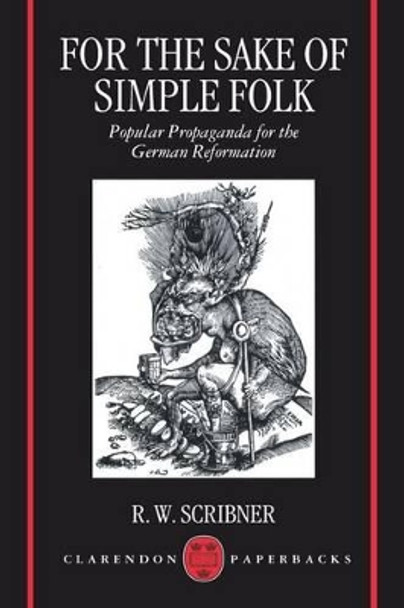In this book R. W. Scribner provides the first detailed analysis of the forms of propaganda - such as illustrated broadsheets, picture books, title pages, and book illustrations - which were aimed at the illiterate and semi-literate during the Reformation, and reproduces many of the vast corpus of prints which still survive in scattered locations in Germany. Dr Scribner advances new and original interpretations of these illustrations, revealing how visual propaganda exploited popular belief and the coarser aspects of popular culture, while at the same time being a product of them. This, he suggests, explains why the Reformation appealed to the broad masses of sixteenth-century people, even though the propaganda was unable to educate them in the more complex theological aspects of the Reformation message. As well as raising important questions about the Reformation as a religious phenomenon, the book is a contribution to the understanding of early modern popular culture, and the nature of propaganda in a pre-industrial society; it is also a detailed historical study of the sixteenth-century woodcut. In develolping an interdisciplinary analysis combining the methods of iconography, semiology, sociology, and folklore, Dr Scribner presents a fruitful new approach to the study of popular mentalities. Hailed as a pioneering study of great importance on its original publication in 1981, For the Sake of Simple Folk is now available in paperback for the first time, with a new Introduction and additional chapter. 'The reproduction of such a formidable body of "documentation" in the text is a major achievement . . . important and pioneering study', Journal of Ecclesiastical History
Reviews`a major achievement ... important and pioneering study' Journal of Ecclesiastical History
Book InformationISBN 9780198203261
Author R. W. ScribnerFormat Paperback
Page Count 360
Imprint Clarendon PressPublisher Oxford University Press
Weight(grams) 1g
Dimensions(mm) 233mm * 157mm * 17mm



![German Reformation by R.W. Scribner 9780333665282 [USED COPY] German Reformation by R.W. Scribner 9780333665282 [USED COPY]](https://cdn11.bigcommerce.com/s-zkx5lhzlf8/images/stencil/444x444/products/5120982/5188539/9780333665282__17551.1724067620.jpg?c=1)





